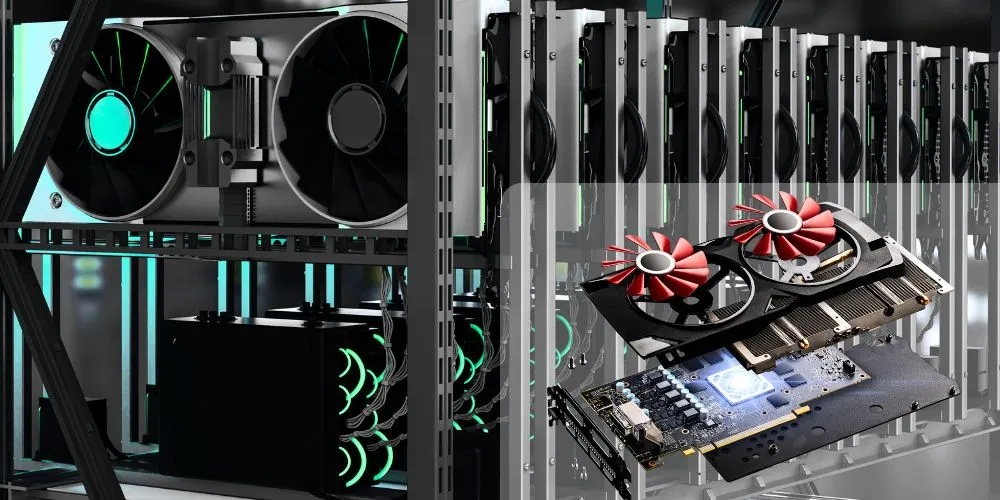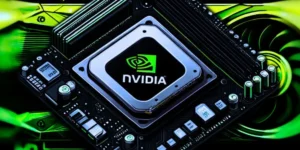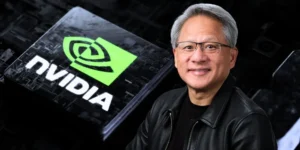Graphics cards are vital in modern computing, powering everything from gaming and professional design to artificial intelligence and data processing. These specialized hardware components render images, videos, and animations with remarkable speed and precision. Understanding the anatomy of a graphics card reveals how each component contributes to performance, efficiency, and visual fidelity. This article explores the key components of a graphics card, their functions, and the innovations shaping their future.
Understanding Graphics Cards
A graphics card, or a GPU (Graphics Processing Unit), is a dedicated piece of hardware designed to accelerate visual computing tasks. Unlike a central processing unit (CPU), which handles general-purpose computing, a GPU is optimized for parallel processing, allowing it to execute thousands of calculations simultaneously. This ability makes graphics cards essential for rendering complex graphics in real-time, supporting high-resolution gaming, 3D modeling, video editing, and deep learning applications.
Key Components of a Graphics Card
Graphics cards consist of multiple integrated components, each serving a distinct purpose. These components process graphical data, generate images, and deliver seamless visual performance.
Graphics Processing Unit (GPU)
The GPU, the main processor responsible for executing graphics-related computations, is at the heart of every graphics card. The GPU is a highly parallelized chip that handles millions of pixels per second, transforming raw data into rendered visuals. It consists of thousands of cores designed to perform mathematical calculations simultaneously, making it ideal for shading, texture mapping, and complex 3D rendering tasks. The architecture of a GPU determines its speed and efficiency, with modern GPUs featuring advanced technologies such as ray tracing, tensor cores, and AI-driven rendering enhancements.
Video Memory (VRAM)
Video memory, or VRAM, temporarily stores graphical data, textures, frame buffers, and rendering instructions. Unlike system RAM, which the CPU uses for general computing tasks, VRAM is optimized for rapid data access and high-bandwidth performance. The amount and type of VRAM directly impact a graphics card’s ability to handle high-resolution textures, complex shading effects, and multiple displays. High-end graphics cards utilize GDDR (Graphics Double Data Rate) memory, with newer generations such as GDDR6 and GDDR6X offering increased speed and efficiency.
Cooling System
The cooling system plays a critical role in maintaining the optimal operating temperature of a graphics card. As GPUs perform intensive calculations, they generate significant heat, which can degrade performance and shorten the lifespan of the hardware. Graphics cards, including heatsinks, fans, and liquid cooling systems, incorporate cooling solutions to prevent overheating. Air-cooled designs rely on large heatsinks with thermal pipes to dissipate heat, while high-performance models may use liquid cooling for enhanced thermal management. Advanced cooling solutions enable GPUs to sustain higher clock speeds and stability under demanding workloads.
Power Delivery System
A graphics card requires a stable and efficient power delivery system to function effectively. High-performance GPUs draw substantial power, often requiring additional connectors from the power supply unit (PSU). Voltage regulation modules (VRMs) manage power distribution, ensuring that the GPU, memory, and other components receive the necessary voltage without fluctuations. Efficient power management contributes to performance stability, reduces energy consumption, and minimizes heat generation.
Display Outputs
Graphics cards have multiple display output ports, allowing users to connect monitors, projectors, and other devices. Modern graphics cards support various connection types, including HDMI, DisplayPort, and USB-C, enabling compatibility with high-refresh-rate monitors, 4K and 8K resolutions, and multi-monitor setups. The quality and number of output ports influence a graphics card’s ability to handle immersive gaming, professional video editing, and workstation applications.
PCB and Circuitry
The printed circuit board (PCB) is the foundation of a graphics card, housing all its components and providing electrical connections between them. The layout of the PCB affects power distribution, signal integrity, and thermal efficiency. High-end graphics cards feature multi-layered PCBs with reinforced power traces, enhanced cooling pathways, and custom engineering to maximize performance and durability.
Functions of a Graphics Card
Graphics cards perform various functions that contribute to rendering realistic visuals, accelerating computational workloads, and enhancing multimedia experiences.
Image and Video Rendering
The primary function of a graphics card is to render images and videos by processing graphical data and converting it into display output. GPUs use advanced rendering techniques such as rasterization, shading, and anti-aliasing to produce smooth and visually detailed images. Real-time rendering capabilities allow for immersive gaming experiences, fluid animations, and lifelike visual effects in movies and virtual simulations.
Parallel Processing and Compute Acceleration
Beyond gaming and graphics rendering, modern GPUs are designed for parallel processing, enabling them to accelerate computational tasks in fields such as artificial intelligence, scientific simulations, and cryptocurrency mining. CUDA (Compute Unified Device Architecture) and OpenCL (Open Computing Language) allow developers to leverage GPU processing power for complex calculations, significantly reducing processing times for large-scale data workloads.
Ray Tracing and AI-Driven Graphics
Recent advancements in graphics technology have introduced ray tracing, a rendering technique that simulates the behavior of light to create highly realistic reflections, shadows, and lighting effects. Ray tracing relies on dedicated hardware within the GPU to calculate the interaction of light with virtual objects, producing cinematic-quality visuals in real-time. Additionally, AI-driven features such as NVIDIA DLSS (Deep Learning Super Sampling) utilize machine learning to enhance image quality while maintaining high frame rates, improving performance in demanding applications.
Virtual Reality and Augmented Reality Support
Graphics cards are crucial in powering virtual reality (VR) and augmented reality (AR) experiences. Rendering VR environments requires high frame rates and low latency to ensure smooth and immersive interactions. High-performance GPUs optimize VR rendering by processing stereoscopic images, tracking motion in real-time, and managing complex spatial calculations. These capabilities enable realistic simulations in gaming, training, and medical applications.
Video Encoding and Decoding
Graphics cards have specialized hardware encoders and decoders that handle video compression and playback. These components accelerate video encoding for streaming, editing, and content creation, reducing CPU load and improving efficiency. Hardware-accelerated codecs, such as H.264, H.265, and AV1, enable smooth high-definition and 4K video playback while minimizing power consumption.
Future Trends in Graphics Card Technology
The evolution of graphics card technology continues to drive innovations that enhance performance, efficiency, and graphical realism. Emerging trends are shaping the future of GPUs, paving the way for new possibilities in computing and entertainment.
AI and Deep Learning Integration
Integrating AI into graphics cards is revolutionizing rendering techniques and computational workloads. AI-powered image enhancement, real-time upscaling, and automated optimization enable GPUs to deliver higher-quality visuals while maintaining performance efficiency. AI-driven algorithms are also used for intelligent noise reduction, realistic character animations, and automated game physics simulations.
Advanced Memory Technologies
Developing faster and more efficient memory solutions improves GPU performance and reduces latency. Next-generation memory technologies, such as GDDR7 and HBM (High Bandwidth Memory), offer increased bandwidth and lower power consumption, enhancing the ability to process complex graphical data. These advancements will further support 8K gaming, real-time ray tracing, and large-scale AI computations.
Energy-Efficient and Sustainable Designs
As the demand for powerful graphics cards grows, energy efficiency becomes a key focus in GPU development. Manufacturers are exploring power-efficient architectures, dynamic power management systems, and sustainable materials to reduce the environmental impact of high-performance GPUs. Future designs aim to balance raw power with optimized energy consumption, ensuring sustainability without compromising performance.
Conclusion
Graphics cards are complex and powerful components that drive modern computing experiences. GPUs are essential in various industries, from rendering high-quality visuals and accelerating parallel computations to supporting AI-driven graphics and VR applications. Understanding a graphics card’s key components and functions provides insight into how these devices operate and continue to evolve. As technology advances, the future of graphics cards will bring even greater capabilities, enabling more immersive gaming, enhanced creative workflows, and groundbreaking innovations in artificial intelligence and scientific computing.









